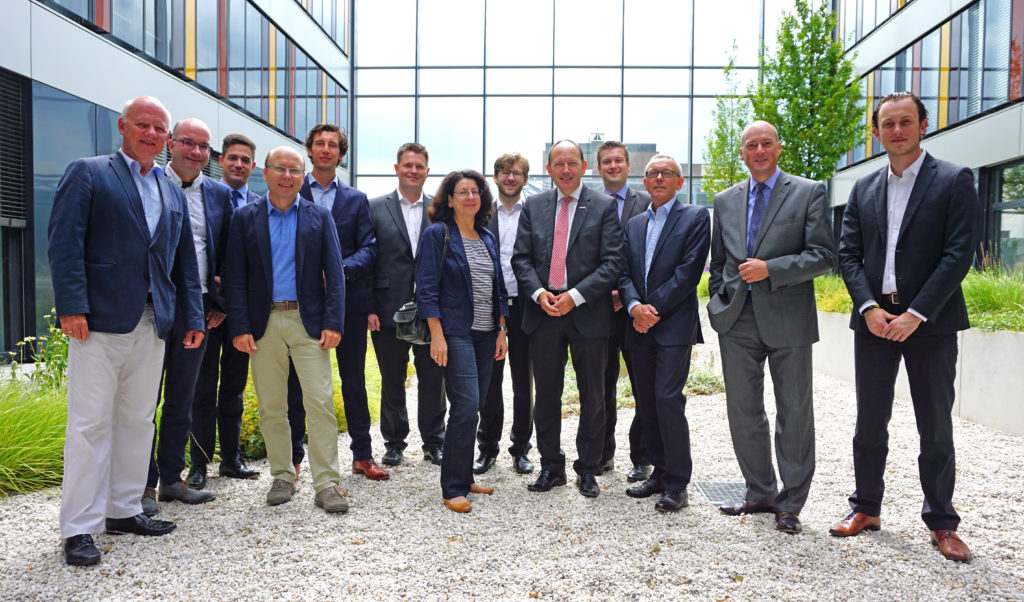Located at the confluence of the Rhine and the Neckar in the northwestern corner of Baden-Württemberg, Mannheim hosts Germany’s second largest river port and the second largest freight train station in Europe. At the 200 hectare marshalling yard, 550 employees process 5300 cars on more than 240 kilo metres rail track and 575 points every day. The port covers 1131 hectare and processes more 6.9 million tons of goods per year. Together with dependent businesses, it employes 20000 people. Due to its unique location, Mannheim is an important intermodal hub.
Mannheim has been selected for the focus phase of Vital Nodes. The Vitel Nodes workshop in Mannheim happened in July. Stakeholders from different organisations discussed challenges and good practices on the local situation in Mannheim, the metropolitan area Rhein-Neckar and on integrating the node into the TEN-T network. The main focus of the discussion was on freight and logistics, while taking into account passenger transport, infrastructure planning and spatial planning. Mannheim is an important location for manufacturing and trade. Its first transport policy dates back to 1868,. Today it is located at three TEN-T corridors: Rhine-Alpine, Rhine-Danube and Atlantic. Mannheim is one of the most important high-speed rail interchange hubs and the port of Mannheim is the second largest inland port of Germany. With its location, Mannheim is an important node on the network.
During the workshop the main challenges discussed, amongst others were:
- The connectivity between Mannheim and its neighbouring town Ludwigshafen, with large construction works on the Rhine bridges in the offing;
- Challenges of brownfield redevelopment of former US army areas;
- The lack of railway capacity and links, including plans for new railway links between Frankfurt am Main and Mannheim;
- Railway noise of transit freight trains; routing of freight trains (night);
- There is a large challenge in maintenance of existing infrastructure, mainly built after WW2, such as bridges which are due at similar times.
Besides zooming in on these challenges, the discussion brought up interesting insights and good practices. Examples are:
- The Green Logistic Park; a concept originating in the 1990s to consolidate goods at one point from which the goods can be shipped to the manufacturing plants by an (electric) shuttle;
- BASF, a large company near the Rhine (Ludwigshafen), carried out a model study estimating the impact the closure of Rhine bridges might have on the network;
- The regional governance mechanisms, consisting mainly manifested in the body Metropolregion Rhein-Neckar. The Metropolregion is stretches over three states (Bundesländer) and various cities. Itis responsible for regional planning;
Takeaways from the workshop are, among others:
- The concept of the Green Logistic Park is innovative and with smart applications it could be used on different scales (from parcel collection point to a large terminal system). Implementing the concept and testing it could be really useful;
- Urban nodes should benchmark their (innovative) approaches with logistics, infrastructure and urban planning. This enables learning from each other and spreading good practises;
- Currently the TEN-T corridors are mainly focussed on improving, strengthening and enlarging the corridors. This shifts bottlenecks to the urban nodes. From this point of view, there are two takeaways. The first one is how to deal with maintenance works and the alignment of these works, having a large impact on the corridor. The second is the possibility to the corridor via the urban nodes by taking specific measures in each node;
- There is a need for a stronger cross border cooperation and EU-policy on noise, timetable alignment and capacity.

Copyright Stadt Mannheim
(Vital Nodes thanks MasterEgE/Flickr for the title photo published under a Creative Commons License, CC BY ND)